Speakers and Abstracts
(Speakers are listed in the order of the programs’ sessions)Lecture 1: Understanding Intellectual Disability

Han Brunner, MD, PhD
Dr. Brunner is the former Head of the Institute of Human Genetics at Nijmegen Radboud University Medical Center, and at Maastricht Medical Center in the Netherlands. Han promotes rapid implementation of genomic technologies in medicine, which is advantageous for patients, and families. Genomic approaches and can make the care for people with rare diseases more effective.
His scientific work has shown that new mutations are the main cause of intellectual disability, which led to the acceptance of exome sequencing as a first-tier test in neurodevelopmental disorders. Recent work from his group established that heterozygote selection is relevant to the overall landscape of autosomal recessive diseases in European populations.
Abstract
With the advent of high throughput genomic assays, the causes of intellectual disability (ID) are now beginning to be understood. For about 50-60% of patients with moderate to severe intellectual disability, the problem can be shown to be due to new mutations.
This has implications for clinical practice. In a cohort of children referred for diagnosis to pediatric neurology, doing exome sequencing first was much more effective than clinician-driven investigations. The diagnostic rate was about 30% with a sequencing-first approach and 8% when diagnostic tests and procedures were ordered by the clinician.
The contribution of X-linked genes is about 5% with a few new conditions that cause ID specifically in females. There is a striking lack of autosomal recessive ID in outbred populations. This is surprising, because there are hundreds of bona fide recessive ID genes.
We examined the landscape of autosomal recessive factors in 2 European populations and find a risk of 1% that a couple is double heterozygous. First cousin couples have higher risks, often of exceptionally rare conditions.
We have started offering a broad preconception carrier screen to consanguineous couples. Initial results show that about 20% of first cousin couples are at high risk as expected.
Lecture 2: Achievements in Genetic Diagnosis and Lessons Learned

Eliane Chouery, PhD
Dr. Chouery obtained her PhD in Human Genetics and Molecular Biology from the Université de Versailles Saint-Quentin-en-Yvelines in France in 2008. She had established, in 1998, the Molecular Biology unit for molecular diagnosis, and in 2005 the Human Identification section, at Saint Joseph University (USJ) in Lebanon. Beginning in 2002, Dr. Chouery was in charge of the Molecular Biology and Basic Genetics courses at the same faculty. She was appointed as Associate Professor in the Faculty of Medicine of USJ in 2017.
Her research focuses on the identification of genes involved in orphan diseases. She is author or co-author of more than 100 publications.
Dr. Chouery’s previous experience enabled her to contribute to the establishment of the Department of Human Genetics at the LAU Gilbert and Rose-Marie Chagoury School of Medicine. This department includes a genetic counseling unit, a molecular genetic diagnosis unit and a human identification unit; and the Human Genetics Department faculty engage substantially in teaching and research activities at the LAU school of medicine.
Abstract
Advances in the field of genetics have revolutionized the field of genetic diagnosis, thus advancing our understanding of various genetic conditions, and widening the landscape of personalized medicine. The development and widespread adoption of next-generation sequencing technologies have significantly enhanced the speed and accuracy of genetic testing, enabling clinicians to identify and interpret genetic variations with accuracy. Additionally, the integration of artificial intelligence and machine learning algorithms has played a pivotal role in streamlining the analysis of vast genomic datasets, facilitating quicker and more accurate diagnosis. These achievements mark a new era in genetic medicine that will ultimately help improve patient outcomes.
Nevertheless, connecting a rare genetic variation to a complex phenotype remains in some cases challenging. Indeed, identifying the cause of a genetic disease requires a multidisciplinary approach, starting with the establishment of a clear phenotype with a detailed family history and ending, in some cases, with functional assays that are crucial for the validation of the pathogenicity of a mutation.
This presentation will briefly discuss the different genetic testing approaches based on the experience of the Department of Human Genetics at the Lebanese American University. New lessons learned will also be shared.
Lecture 3: Therapeutic Strategies for Charcot-Marie-Tooth Disease and Related Neuropathies. Current Knowledge and Contribution of our Research
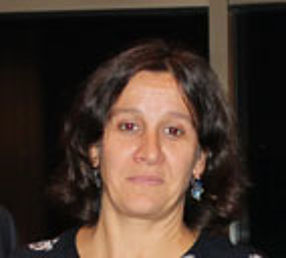
Valerie Delague, PhD
Dr. Delague is currently leader of the research group “Genetics and Pathomechanisms of Inherited Peripheral Neuropathies” at Marseille Medical Genetics/U 1251 research unit in Marseille. She has been working on these diseases for many years, and has acquired a strong expertise in the field. By setting-up a network of geneticists, clinicians and molecular biologists from the Mediterranean basin and the Middle-East (Lebanon, Tunisia, Morocco, Palestine and Iran), and due to her previous expertise (7 years of research on consanguineous families in Lebanon), she focuses her research on autosomal recessive forms of CMT, which are usually less frequent, of earlier onset and more severe than the autosomal dominant CMT forms (CMT1).
Through these collaborations, she has the opportunity to collect large inbred families affected mostly by autosomal recessive forms of CMT, and has been able to identify several genes mutated in different forms of CMT4 (autosomal recessive demyelinating CMT): CMT4F , due to mutations in PRX and CMT4H due to mutations in FGD4, dHMN due to mutations in VRK1, as well as genes mutated in rare forms of Non Progressive Cerebellar Ataxia (WDR73, PMPCA).
Through the identification of new defective genes/proteins in the peripheral nerve, and the study of their function in normal and pathological conditions, she intends to better understand the physiopathology of IPNs and to identify treatments for these diseases. To this aim, she is developing several in vitro and in vivo (mouse, zebrafish) models. Her work led to the publication of more than 90 scientific papers in international peer-reviewed journals.
Finally, one striking issue in Dr. Delague’s career is her constant dedication toward developing collaborations between researchers from the Mediterranean areas (Lebanon, Tunisia, Algeria, Morocco and Palestine), and more importantly toward improving the nature of the “North/south”. In 2016, she was awarded with the Rammal medal, for her leading role in research in Molecular Genetics, her teaching and training of other researchers and for her continued efforts over many years to develop scientific collaborations between researchers from many countries in the Mediterranean area and to enhance global expertise in the treatment of genetic disorders.
Abstract
Charcot-Marie-Tooth (CMT) disease is one of the most common inherited neurological disorders, affecting either axons from the motor and/or sensory neurons or Schwann cells of the peripheral nervous system (PNS) and caused by more than 100 genes. Despite increasing knowledge of the genetics and pathomechanims of these diseases, therapeutic options are still missing. There are, however, extraordinary developments in the generation and study of preclinical models to test and set-up therapeutic strategies for CMT patients. Some of these research are currently being translated, or are getting close to clinical trials.
In this lecture, an overview of the most recent advances for the therapy of CMT at both the preclinical and clinical levels will be provided. Also, some of the research in the field for CMT4H, dHMN-VRK1 and a new autosomal recessive form of CMT due to mutations in PDXK will be presented.
Lecture 4: Genetics of Hearing and Balance in Mice and Men
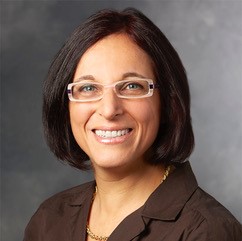
Mirna Mustapha, PhD
Dr. Mustapha is currently an Associate Professor and EDI deputy director at the Biosciences department and the Neuroscience Institute of the University of Sheffield in the UK. She got her Doctoral degree (PhD) in Human Genetics from Pasteur Institute, Paris. She then immigrated to the USA and joined the Department of Human Genetics at the University of Michigan for postdoctoral training and 5 years later she was offered an assistant professor position in the Department of Otolaryngology at Stanford University, California. During her academic career she had the opportunity to employ cutting edge human genetics and mouse genetics technology, single cell transcriptome and highly systematic data analysis. Dr. Mustapha current research focuses on the factors involved in the maintenance of the cochlear afferent neurons using mouse genetics, molecular and cellular biology, single cell transcriptomics analysis and physiology. In the long term, these studies will lead to the identification of genetic susceptibility factors that will enhance clinical diagnosis; improve prognostic and quality of life of patients with age related and noise induced hearing loss.
Abstract
Hereditary hearing loss caused by inner ear disease is prevalent and has significant implications for quality of life. Mouse models have facilitated the discovery of genes that underlie hereditary inner ear disease in humans, have made it possible to study the role of these genes in inner ear development and function, and hold great promise as models for developing treatments for hereditary inner ear disease.
Development of hearing depends on the exact orchestration of gene expression patterns and the arrangement of a define network of afferent fibers and synapses. My current research goal is to define the network of genes involved in the functional maturation of afferent synapses in the cochlea using mouse genetics and a combination of molecular, morphological and physiological methods. There is a major gap in our basic understanding of this critical process. Discoveries in this area could be exploited to improve the interface between dendrites and the electrode array of a cochlear implant and will contribute to prevention and developing of therapeutic approaches for cochlear synaptopathy and/or neuropathy.
Lecture 5: Advancing Thalassemia Treatment through Cutting-Edge Molecular Techniques

Mira Kassouf, PhD
‘Reading’ the complete mammalian genome sequence was a significant advancement that marked and catalysed the beginning of my academic scientific life. Over the years, that same advancement illustrated the complexity of the DNA code and forced a constant re-evaluation of our knowledge, progress, and hopes in molecular biology and its applications in molecular medicine. Dr. Kassouf is a senior research scientist at the Weatherall Institute of Molecular Medicine, University of Oxford, with a 20-year experience in molecular and cell biology, dedicated to understanding how the pieces of DNA, namely non-coding genomic regulatory elements (promoters, enhancers, boundary elements) work together, to decipher the DNA code and create a cellular identity. She focuses on the alpha globin locus in erythropoiesis and use patient cases, in addition to cellular and animal models, combined with cutting edge molecular tools and technologies, such as genome editing and genomics approaches to address fundamental questions on how genes are switched on and off in development and differentiation. This knowledge impacts tremendously on our interpretation of faulty pieces of DNA (mutations); principles that are at the heart of applications in precision and personalized medicine.
Dr. Kassouf completed her undergraduate studies in Medical Laboratory Technology at the American University of Beirut, Lebanon, followed by a MSc in Human Genetics and Immunogenetics at Brunel University, UK. She received her D.Phil in Molecular Hematology from the University of Oxford and continued her research in gene regulation at the Medical Sciences Division at the University of Oxford for two consecutive postdoctoral projects. Dr. Kassouf is currently under the mentorship of Prof. Emeritus Doug Higgs, transitioning into an independent academic role at the University of Oxford.
Abstract
Non-coding mutations at the alpha globin locus showcase ‘enhanceropathies’ as novel molecular mechanisms in human genetic disease.
Over the past 20 years, it has emerged that most genetic variation associated with common traits and risk of complex and rare genetic disease occurs in the non-coding genome and particularly in enhancer elements. Enhancers are non-coding sequences that regulate spatio-temporal gene expression. It is becoming increasingly clear that the genetic, structural and/or epigenetic disruption of enhancers represent major causative factors in many human diseases referred to as enhanceropathies. Common natural variation of the human α-globin cluster causing α-thalassaemia is almost always due to deletions or nucleotide variants in the coding sequence. Nevertheless, deletions and duplications of the α-globin enhancer elements have been seen in sporadic families with α-thalassaemia and have been pivotal not only for resolving clinical cases but also for expanding our understanding of long-range gene regulation. Alpha-globin enhanceropathies remove between one and all four of the human a-globin enhancer elements (R1, R2, R3, R4), and of interest, all of the deletions characterised to date include the enhancer element R2. This is a classical enhancer that, in humans, contributes 90% of enhancer activity of the cluster of four α-globin enhancers. Here, we report and for the first time a triplication of the R2 element that causes the α-globin expression to increase in members of the same family who inherited this allele. These subjects do not present with an associated clinical phenotype. As part of our continued studies on how clusters of enhancers work together to regulate gene expression, a detailed molecular evaluation of this particular case would add to our fundamental work in transcriptional regulation. Moreover, clinically, these mutations may not cause a detectable b-thalassemia phenotype, but, if inherited with other mutations, may exacerbate or ameliorate an already existing thalassemia. Examining the regulatory landscape for perturbations, and in particular the enhancer elements, may increase the probability of success when looking for causative mutations in genetic diseases and open new avenues for treatment strategies, including genome editing approaches.
Lecture 6: The Molecular Basis of Inborn Errors of Immunity - From Bench to Bedside
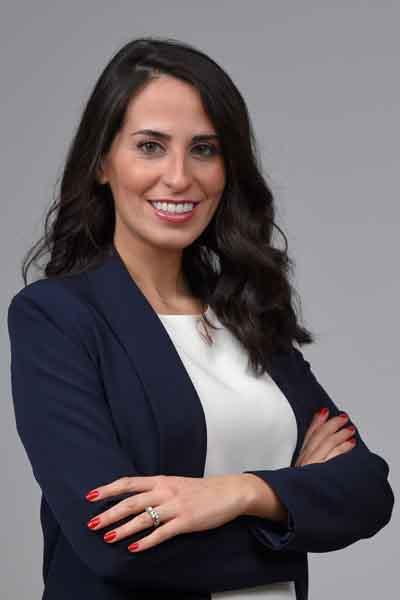
Cybel Mehawej, PhD
Dr. Mehawej obtained her PhD in Genetics from Paris Descartes University and from Saint-Joseph University (USJ) in 2013 (International Dual Degree PhD). Her doctoral work aimed to identify new genes involved in skeletal dysplasia. In 2015, Dr. Mehawej joined Dr. Raif Geha’s laboratory at Boston Children’s Hospital, Harvard Medical School as a postdoctoral fellow, where she focused on the identification of the molecular bases of Primary Immunodeficiency Diseases (PIDs). During her PhD and postdoctoral training, Dr. Mehawej acquired skills in sophisticated molecular and functional genetics tools and techniques, including Next Generation Sequencing applications and analyses and the CRISPR-Cas9 technology. In July 2017, Dr. Mehawej was recruited as Assistant Professor at the Faculty of Medicine at USJ where she was in charge of teaching medical students in functional genetics and immunogenetics. She was also appointed Head of the functional genetics section at the Medical Genetics Unit at USJ. Dr. Mehawej was in charge of the molecular diagnosis of patients with PIDs. Furthermore she contributed to the implementation of TREC-based neonatal screening for severe combined immunodeficiency diseases and T-cell lymphopenia conditions in Lebanon, in collaboration with the Ministry of Public Health, American University of Beirut Medical Center and the iFight PID fund.
Dr. Mehawej’s activities have led to the identification of several genes involved in orphan diseases. Her current research focuses on the elucidation of the molecular bases of genetic disorders, with a special focus on PIDs. She is author or co-author of 20 papers published in peer-reviewed journals. In addition she has participated in several international scientific meetings. Dr. Mehawej has been the recipient of a number of fellowships and awards, and her work has been recognized by the “Franco-Lebanese Medical Association” which granted her an “Excellence Award” in 2012.
Abstract
Inborn errors of immunity (IEI), also known as primary immunodeficiency diseases are a heterogeneous group of more than 480 different genetic disorders that affect the development and/or function of the immune system. These diseases are characterized by recurrent or opportunistic infections that may occur with additional manifestations including allergy, lymphoproliferation, autoimmunity and autoinflammation. Recent advances in understanding the molecular bases of IEIs have enabled the implementation of novel therapeutic approaches.
This talk will focus on IEIs, their warning signs, and their different types. During this session, the multidisciplinary approach needed for the diagnosis of patients with IEI will be discussed with an emphasis on the role of genetic testing in establishing an accurate diagnosis.
Lecture 7: Inherited Epidermolysis Bullosa: Classification and Management
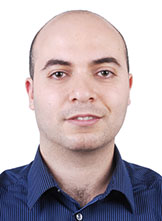
Mazen Kurban, MD, PhD
Dr. Kurban is a Dermatologist and American Board Certified in Clinical Molecular Genetics. He is currently a Tenured Professor of Dermatology and Biochemistry and Molecular Genetics at the American University of Beirut Medical Center and Adjunct Professor in the department of Genetics and Genomics at Hamad University Doha Qatar. Dr. Kurban has more than 175 publications in Clinical, Basic science and translational research in the field of Dermatology and Genetics. He is the current president of the Lebanese society of Dermatology. He is the recipient of several national and international awards.
Abstract
Inherited epidermolysis bullosa (EB) is a heterogeneous group of rare genetic disorders characterized by skin and mucosal blistering triggered by minor trauma. Accurate classification is crucial for guiding management and prognosis. The traditional EB classification relied on clinical and histological features, dividing EB into four main subtypes: epidermolysis bullosa simplex (EBS), junctional EB (JEB), dystrophic EB (DEB), and Kindler syndrome. Recent advances in genetics have led to a revised classification system incorporating molecular defects alongside clinical and histopathological features. This new system provides a more precise diagnosis and enables genotype-phenotype correlations. Due to the diverse nature of EB, management is multifaceted and requires a multidisciplinary approach. Primary strategies focus on preventing blister formation and infection, wound care, pain management, and nutritional support. Specific interventions depend on the EB subtype and severity. Recent advancements in areas like gene therapy and stem cell therapy offer promising future avenues for treatment.
Lecture 8: Rare Hereditary Cancer
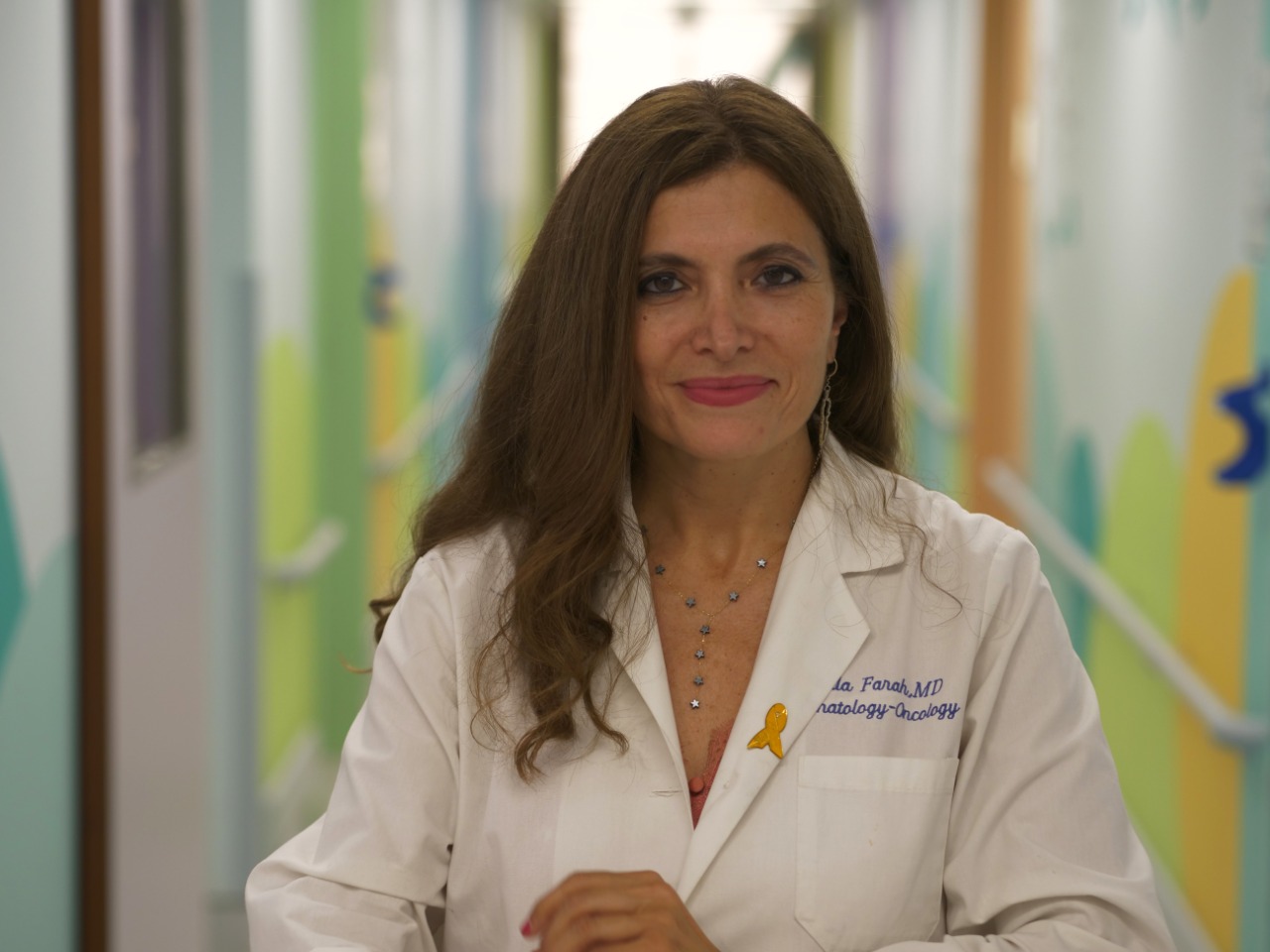
Roula Farah, MD, FAAP, MPH
Dr. Farah is a Professor of General Pediatrics and Pediatric Hematology/Oncology at the LAU School of Medicine in Beirut, Lebanon and LAU Medical Center Rizk Hospital. She also holds a Global Masters in Public Health from the Imperial College of London, UK.
She was recently a visiting professor at the Pediatric Hematology/Oncology unit at UZ Brussel in Belgium and a visiting Professor at the University of Science Po Bordeaux in France.
She is certified by the American Boards of Pediatrics and Pediatric Hematology/Oncology and the Belgian Board (NARIC-National Academic Recognition Information Centre) and is a Fellow of the American Academy of Pediatrics.
Prof. Farah has numerous publications in the field of pediatrics and pediatric hematology/oncology and has received several international awards for her scientific work on childhood cancer and bleeding disorders. She is a regional and international leader, speaker and lecturer at various scientific societies. Her major scientific interests are in Familial and Inherited Cancers being a pioneer in Lebanon in this field, Brain Tumors, Rare Bleeding Disorders, Histiocytic Disorders, Cancer Survivorship, Palliative Care and Global Health.
She is currently a Board member of the Lebanese Society of Pediatrics, the MENAHL Board of Directors, a founding member of the Lebanese Palliative Care Society and a national representative in the CML International Study Group. She served as president of the Lebanese Pediatric Hematology/Oncology Group and was a member of the executive committees of the Lebanese Cancer Society and the Lebanese Society of Hematology. She founded in 2015, the first Cancer Survivor Group in Lebanon and has contributed to developing cancer survivorship programs in Asia.
Touched by a child who died from cancer in 2002 due to lack of financial means, she founded CHANCE (Children Against Cancer) Association to secure equal access to care to each child with cancer regardless of their socio-economic situation. She is currently the president of CHANCE Association in Lebanon and CHANCE International in Geneva that support the treatment of children with cancer, secures access to essential medications, advocate for their rights and raise awareness against cancer. She has organized various national cancer awareness campaigns with the Lebanese ministries of health, environment and education.
She also organized recently two impactful international workshops in order to improve cancer care in the region, one in 2022 on Palliative Care and Pain in children in collaboration with the University of Lausanne and one in 2023 on Familial and Inherited cancers with the Princess Maxima Centre in the Netherlands.
Since 2014, Dr Farah has been in the leadership team of Asia as a member of the Asia Regional Committee of the CCI (Childhood Cancer International). Since 2019, she became a member of the World Health Organization’s Global Childhood Cancer Initiative Working Group. In 2020, she was nominated as a CCI-WHO sub-committee representative for the Eastern Mediterranean (EMRO) region.
Abstract
Cancer in children and adolescents is rare and represents around 2% of the total cancer burden. Although most pediatric cancers are considered sporadic, several recent studies have revealed that up to 10 % of all types of childhood cancer are characterized by an inherited susceptibility.
Knowledge of genetic predisposing mutations may improve the understanding of tumorigenesis, direct patient care, and enable genetic counseling of patients and their families. Importantly, studying patients with cancer predisposition syndromes is vital to design surveillance programs, can lead to therapy adjustment and can enable follow-up and psychological support for affected individuals and their families. In case of expected increased toxicity or resistant disease, this may lead to modified treatment strategies.
It may also offer insight in the prognosis of the child and lead to recognition of co-occurring signs and symptoms unrelated to the cancer. Family members of patients with an identified cancer predisposition syndrome may benefit from knowledge on increased cancer risks for themselves and benefit from a cancer surveillance program. Furthermore, detection of a cancer predisposing genetic mutation gives opportunities for reproductive counseling and prenatal diagnosis. In some cases, the tumor occurrence can be the first indication of a cancer predisposing syndrome, well before additional signs of the underlying syndrome become evident.
In this lecture, we will review the warning signs of a rare inherited predisposition to cancer in a family, discuss the difference between familial and inherited cancers and provide an overview of the evidence on how identification of cancer predisposition in children diagnosed with cancer might impact treatment, surveillance, and counseling for the child and his entire family.
Lecture 9: Familial Mediterranean Fever: Translational Research, Clinical Trials, and new Therapeutic Avenues

Jose-Noel Ibrahim, PhD
Dr. Ibrahim holds a joint PhD in Biology, Medicine, Health with a specialization in Genetics and cellular and molecular biology from the Lebanese University and the University of Poitiers, France.
Throughout his doctoral thesis, Dr. Ibrahim focused on studying the cellular and molecular mechanisms underlying the pathogenesis of Familial Mediterranean Fever (FMF). He was able to define a specific ex vivo cytokine profile characterizing FMF patients and identify different genes and inflammatory markers that are potentially involved in the susceptibility and clinical severity of the disease. Considering these findings, he proposed a schematic model of the inflammatory process of FMF, highlighting various potential targets for therapeutic intervention, particularly among patients with refractory FMF.
In March 2015, Dr. Ibrahim was appointed chairperson of the Medical Laboratory Sciences Department at the Lebanese German University, after which he got promoted to director of the Faculty of Public Health in 2019. In November 2020, he was granted the rank of assistant professor at the Lebanese University.
Dr. Ibrahim joined LAU as an assistant professor of genetics in September 2022. His research work aims at studying molecular genetics and immunocellular aspects of auto-inflammatory and auto-immune diseases. He also focuses on understanding the pathophysiology of different types of cancer, mainly breast and ovarian cancers. He is author or co-author of more than 15 papers published in peer-reviewed journals. On the other hand, he is in charge of the Genetics and Human Genetics and Epidemiology courses at the School of Arts and Sciences, LAU, Beirut campus.
Abstract
FMF is a recessive autoinflammatory disease affecting people originating from the Mediterranean Sea. It is caused by mutations in the MEFV gene encoding the protein “pyrin/marenostrin”. MEFV mutations lead to the activation of the pyrin inflammasome resulting in an uncontrolled release of the pro-inflammatory cytokine IL-1β. Colchicine has been used as the gold standard treatment for FMF since the 1970s. It is successful in decreasing the frequency and severity of the crises, as well as preventing or reducing the risk of amyloidosis, the most severe complication of the disease. Nevertheless, colchicine has usage limitations and approximately one-third of patients experience partial remission, with 5-10% being non-responders. Recent advancements in FMF research have facilitated the translation of novel, effective, targeted, life-changing therapies from bench to patient. Case studies and clinical trials have affirmed the efficacy and safety of various biologics, in particular the FDA-approved IL-1 inhibitors, anakinra and canakinumab, in treating refractory FMF patients. Moreover, due to alterations in the gut microbiota of FMF patients, the potential therapeutic role of different probiotics is under investigation. Epigenetics also play an important role in the pathogenesis of the disease. In this respect, current studies are exploring the functional impact of micro RNAs (miRNAs) on MEFV expression, their involvement in the disease manifestation, and eventually their use as biomarkers and therapeutic tools for FMF. Finally, since FMF commonly results from missense mutations, CRISPR-Cas9 gene editing technology could offer new avenues for the treatment of the disease.
Lecture 10: Therapeutic Advances in Neuromuscular Disorders & Spotlight on Spinal Muscular Atrophy
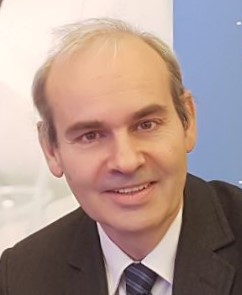
Andoni Urtizberea, MD, MSc.
Dr. Urtizberea is a French physician trained in Paris University (1983-1987) and certified both in pediatrics and PMR (physical medicine and rehabilitation). After graduating in parallel from the “Institut d’Etudes Politiques de Paris” in 1987, he served many years as Medical Director of the AFM-Telethon and then as General Delegate of the “Institut de Myologie of Paris”. As Scientific Director of the European Neuromuscular Center in the Netherlands (ENMC, 1999-2005), and with the AFM-Téléthon’s support, he contributed to the establishment of many global networks in myology. He served till December 2019 as part-time clinical myologist in Hendaye Hospital, France (APHP trust) and as deputy coordinator of the French Neuromuscular Network (FILNEMUS) in Marseilles. Over the past twenty years, he headed various worldwide educational events dedicated to myology (in Europe, Russia, Latin America and, more recently in the Middle-East). He is currently a faculty at the Institut de Myologie of Paris, France, running the AcadeMYO project. Ideally located at the intersection of industry, patient advocacy groups and academia, his main objective is to raise more awareness about these rare conditions notably in emerging. In (2016), and together with Prof. Andre Megarbane (Beirut, Lebanon), he co-founded “Maladies Orphelines Sans Frontières” (MOSF), an NGO dedicated to humanitarian relief in the field of rare diseases.
Abstract
Despite their relative paucity, a growing number of neuromuscular conditions are nowadays amenable to specific targeted therapies, irrespective of their acquired or genetic nature.
For instance, a novel generation of immunological therapies is now available and has increasingly become part of the our therapeutic arsenal to combat refractory myasthenia gravis as well as inflammatory myopathies.
Gene therapies in general derive from better knowledge and understanding of the pathogenesis of hereditary neuromuscular conditions such as neuropathies and myopathies.
In that context, the paradigms of Duchenne muscular dystrophy (DMD) of Spinal Muscular Atrophy (SMA) are highly illustrative and interesting to compare.
A gene therapy product, based on AAV-mediated microdystrophin delivery, has recently been approved in the United States after showing some degree of efficacy, mostly at the biological level.
SMA patients have, in theory, access to three disease-modifying-therapies: a gene therapy product (onasemnogene abeparvovec), an antisense-oligonucleotide (nusinersen) or a small molecule acting on splicing (rsidiplam). All three have advantages and disadvantages but remain extremely pricey.
Newborn screening programs are increasingly being implemented across the world.
Unfortunately, most of these major therapeutic breakthroughs do not benefit to SMA patients from the so-called global South, the high costs of these molecules resulting in unequal access, frustration and ultimately, social injustice.